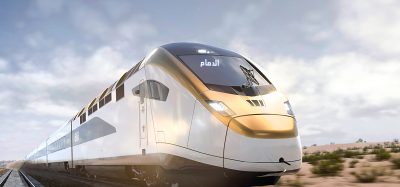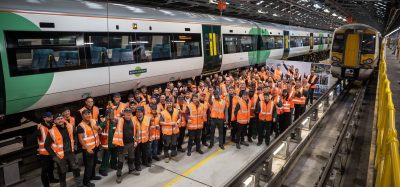Delivering track renewals
Posted: 3 November 2005 | | No comments yet
Network Rail faces a challenging set of targets in delivering its £2 billion per annum investment programme. These challenges are particularly daunting in respect of its track renewals programme, where it needs to drive 30% efficiency out of its cost base by the end of the current Regulatory control period in 2008/9, whilst at the same time reducing train delays by 30%.
Network Rail faces a challenging set of targets in delivering its £2 billion per annum investment programme. These challenges are particularly daunting in respect of its track renewals programme, where it needs to drive 30% efficiency out of its cost base by the end of the current Regulatory control period in 2008/9, whilst at the same time reducing train delays by 30%.
Network Rail faces a challenging set of targets in delivering its £2 billion per annum investment programme. These challenges are particularly daunting in respect of its track renewals programme, where it needs to drive 30% efficiency out of its cost base by the end of the current Regulatory control period in 2008/9, whilst at the same time reducing train delays by 30%.
Head of Major Projects and Investment, Simon Kirby, is adamant: “We have to reach our efficiency savings target. Progress so far has been good and for the end of financial year one, we have reached an efficiency cost saving of 8%.”
All this needs to be achieved at a time when volumes of work are steadily increasing with a 40% increase planned in plain line volumes by 2006/7 and a 50% increase in switch and crossing units compared with recent years.
April 2004 – new start / way of working: integrated teams
To support this step up in performance, Network Rail has adopted a new form of contract and way of working with its track renewals contractors, with the aim of driving a culture change in delivery.
The renewals contracts valued at £500 million per annum were launched in April 2004 and are now well bedded-in. There are ten geographically-based integrated management teams made up of representatives from Network Rail and its suppliers, working to a standard template, but populated on a best man for the job basis. The format of the new contracts, based loosely upon the I Chem E Green Book, involves risk sharing to encourage joint resolution of issues. Considerable effort is being put into making the target costing process work effectively. Key to driving the desired behaviours are incentives via a pain/gain share mechanism. Contractors are encouraged to innovate and use resources wisely. They are also assessed on other areas such as quality, safety and efficiency through nine performance measures.
In addition there is considerable flexibility to vary volumes under the contract, with good performance rewarded by increasing volumes of work. All contractors received a fair share of work in year one, but their allocation of work in future years will depend upon their continued demonstration of performance. Those that perform well will benefit from more work coming their way in the future.
Key strategies to drive efficiency and output performance
There has been a good response to the efficiency challenge so far, but Network Rail and its suppliers need to up their game further to achieve the scale of change necessary. Most of the efficiency savings so far have been down to a much greater focus by Network Rail staff and our contractors in controlling costs and reducing waste. Contractors have been implementing ways to improve their operations through changes such as standardisation and better planning.
We have also done our part by introducing much tighter controls around changes to specification and engineering
train planning.
Despite the early success there is still a long way to go. Network Rail is adopting an efficiency strategy based around six key elements:
- Appropriate scoping of work
- Planning and change control
- Efficient utilisation of access
- Central procurement of materials
- High output plant
- Other mechanisation opportunities
Appropriate scoping of work
Some work types and methods of working are inherently more efficient, because they involve replacing multiple components in one go, rather than returning to the same worksite on several occasions over successive years to replace rails, sleepers and ballast. There are obviously trade-offs between timely asset replacement and efficient construction and whole life cost modelling has been used to determine an optimum strategy. For switches and crossing renewals, careful attention to the site specification and standardisation of designs is key to controlling costs.
Planning and change control
As already mentioned above, getting a robust plan and then sticking to it, with the rigorous challenge of the need for any changes and tight change control, is already paying dividends. To support this, Network Rail has been putting significant effort into improving the quality of its support systems and the competency of its technical staff. This is really back to basics, but if we can’t get the planning right, then so much rework and waste occurs. By standardising on our planning templates and process we are driving greater discipline into our joint teams. We have just been through a major programme of implementing new planning and cost control systems. This has an additional benefit down stream of enabling more effective benchmarking comparisons of performance between teams, so that we can see where the best practices really lie. This approach is being adopted across all of our investment programmes and is part of our overall drive to establish best in class project management.
At the sharp end of delivery, Network Rail is also establishing a National Integrated Control Centre in York which will provide a focus for all short term planning and real-time resource and incident management. This is due to go live later this year and is the first time the UK rail industry has had such a facility dedicated to national construction control.
Efficient utilisation of access
Engineering access is a major constraint on the ability to deliver track renewals, and there are increasing commercial pressures to reduce this network down-time despite the increasing volumes of work.
One approach being pursued is to ensure that specified job lengths are matched wherever possible to shift lengths such that maximum productivity can be achieved. The processes and technology used to actually take engineering access and place protection are also being challenged in order to maximise working time.
The optimum access strategy varies considerably, depending upon the work type and nature of traffic on the route. Operators rightly expect us to make the best possible use of access and we are adopting a range of access strategies in order to optimise the use of this scarce resource and endeavour to develop alternative installation methods and plant in order to utilise these opportunities.
Central procurement of materials and plant
With such a large volume of track renewals, leveraging economies of scale through procurement is an obvious route to efficiency. Much of this has been done in the past, so there are limited further savings available. However, by driving simplification and consistency in adopting a single national specification for materials and increasing adoption of European standards, further savings continue to be found. The recent move to adopt a standard NR60 rail section based upon the UIC60 section has been a major step in this direction.
Having taken maintenance activity in house last year, Network Rail has responsibility for direct procurement of a much greater range of plant and materials. It is therefore able to leverage greater purchasing power from its supply base.
This is a general strategy which is being pursued across all of our programmes, although the material savings potential is greatest where we can identify genuine commodity purchases. By direct dialogue with our materials suppliers we are finding ways to amend our specification in order to adopt standard industry products. In plant and labour we are encouraging our suppliers to use direct sources, or to secure more competitive rates. We now have a genuine direct sourced alternative which is also helping to provide a realistic benchmark against which to measure our suppliers. Elsewhere savings are also being realised shortening the supply chain and dealing direct with previously second or third tier suppliers. For example, in signalling we are now outsourcing packages of work direct to more specialist suppliers. Many of these second tier suppliers are relishing the opportunity to step up and demonstrate how well and cost efficiently they can perform.
High output plant
Increased mechanisation of track renewals activity utilising complex purpose designed high output relaying and re-ballasting plant, has long been standard practice on most continental mainline railways. There are three fundamental reasons why the UK has been slow to take up this technology. Firstly it requires a trained workforce in order to use the plant to its greatest potential. In the past we have tended to relay our network just in time creating a patchwork railway and it is hard to financially justify breaking out of this cycle. Secondly we need the plant to be redesigned to fit within our tighter UK clearance gauge, which has required a dedicated capital investment. Finally we need the right access strategy including longer mid-week night possessions to ensure we can get adequate utilisation of the expensive plant.
Network Rail has bitten this bullet by investing over £200 million in recent years in three high output systems plus an associated support plant. This provides the capability to undertake around 40% of its plain line renewals by such methods – sufficient for almost all required renewals work on its main line routes. By forming joint teams with partnerships of UK and continental contractors, such as the First Engineering/Swietelsky joint venture, a rapid transfer of continental expertise and UK understanding is working well.
Early experience on the West Coast route modernisation project and on the Great Western main line has been very encouraging with performance and unit cost levels out-performing conventional methods.
Other mechanisation opportunities
A range of other mechanisation opportunities are now being pursued by Network Rail in conjunction with its contractors.
It has become standard practice to install switch and crossing (S&C) layouts using dedicated gantries and rail mounted Kirov cranes, and this has shown significant cost and time savings over traditional methods of construction on site. Network Rail and its contractors continue to challenge these working practices to identify further opportunities to reduce construction time. A recent process improvement project adopting six sigma analysis techniques has identified the potential to slash over 40% from the standard S&C installation time. The key elements here have been robust construction planning and contingency management, effective site and logistics preparation, and identifying opportunities to align activities.
Looking further to the future, Network Rail is exploring the use of tilting wagons to transit pre-assembled S&C units and allow these pre-built modules to be installed directly into track. This approach offers significant whole life quality as well as construction savings and reduces the requirement for access. It uses tried and tested continental methodology, and we are determined to learn from this by involving overseas suppliers.
Further current applications for mechanised plant being explored jointly with Network Rail’s contractors include the use of Kirov cranes for plain line panel relaying, and the use of rail mounted vacuum plant for localised ballast cleaning and a variety of other potential applications such as drain cleaning and cable laying.
Controlling quality
With the strong emphasis on costs and productivity, Network Rail is ensuring there is an additional focus on maintaining the quality of delivered track renewals. For the first time this year we are utilising our routine track measurement data captured by the New Measurement Train as a mechanism for renewals quality control. The large volumes of data can be readily converted into overall performance metrics, allowing us to monitor long-term compliance with required construction standards. This is proving very effective at comparing performance between contractors and I have no doubt it will help us to drive up overall quality with resultant whole life benefits. We are clearly here for the long term, and whilst we are very focussed on achieving our efficiency challenge, we won’t let this compromise overall asset stewardship or whole life costs.
Head of Major Projects and Investment, Simon Kirby states: “We have achieved the year one target but the challenge gets tougher year on year and next years business plan will need some real determination from both Network Rail and its suppliers in delivering that challenge. It is essential that everyone recognises that to enable the current strategy to succeed.”
Global Railway Review Autumn/ Winter Issue 2025
Welcome to 2025’s Autumn/ Winter issue of Global Railway Review!
The dynamism of our sector has never been more apparent, driven by technological leaps, evolving societal demands, and an urgent global imperative for sustainable solutions.
>>> Read the issue in full now! <<<







